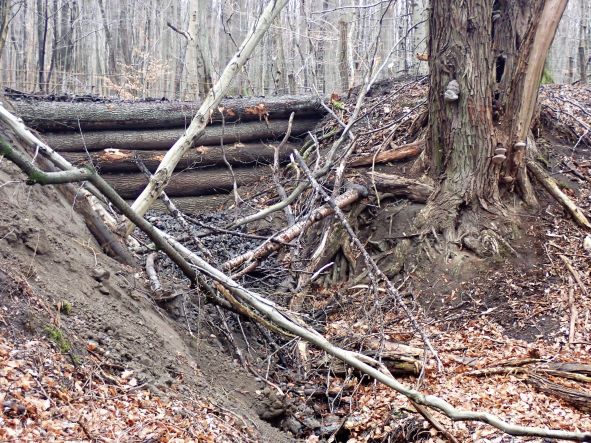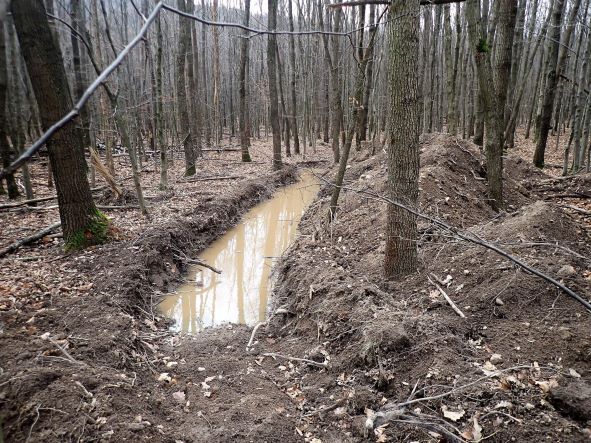Due to intensive forest management and climate change, wetlands in forests have been severely reduced.
To compensate this, and to demonstrate good practices, on a small scale, the Danube-Ipoly National Park Directorate has established a number of new wetlands during 2021-2022 as part of the LIFE4OakForests project.
In order to retain water and catch sediments, we built small dams on the Hévíz stream in Nagyoroszi, surrounded the Égeres spring with a fence to protect the outflow from the trampling damage of wild boar and deer. We have created drainage ditches leading to the forest along the roads, which, in addition to water retention, also contributes to making forest roads more accessible.
Near Diósjenő below the Kámor-Hill, the dam of the former Malom Lake was reconstructed (made of crushed stone, logs, reinforced with concrete mesh), and stones were placed in into the stream to reduce the erosion of the water.
During spring, these wetlands, lakes will be occupied by amphibians and reptiles. Puddles will be habitat by forest frogs, the springs will be occupied by salamanders, and the lake will be populated by water snakes, aquatic insects.
The significance of these wetlands can really be measured at the landscape level. We intend to carry out further interventions in other areas of Börzsöny in the future. Similar interventions were performed in the Bükk National Park (https://www.youtube.com/watch?v=0Vco8h1HmwE&t=1s).
In addition to maintaining and increasing the biodiversity of forests, water retention also has a positive effect on its microclimate, productivity (carbon sequestration) as in Hungary it is especially highly dependent on rainfall and water supply.
Péter Koncz, project manager

